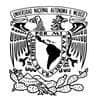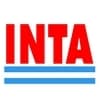El metano y la ganadería bovina en México: ¿Parte de la solución y no del problema?
El 73 % del territorio de la Republica Mexicana se utiliza para las actividades agropecuarias, con el 58 % de la superficie empleado como agostaderos, en donde la producción de bovinos se basa en pastoreo y aunque la producción bovina extensiva es una de las que mayores emisiones de gases efecto invernadero (GEI) produce, también es la que mayor capacidad de mitigación tiene. El potencial de mitigación en sistemas de producción bovina puede ser mayor de 20- 40 % de los niveles actuales, siempre que se puedan adaptar prácticas destinadas a mejorar el manejo de las praderas, la alimentación de los animales y mejoramiento genético. La ganadería extensiva tiene un gran potencial de secuestro de carbono a través de las praderas. El potencial de mitigación del impacto ambiental, y no solo de las emisiones, puede ser mayor en los sistemas en pastoreo si se toman en cuenta todos los posibles servicios ambientales que estos prestan. Lograr un balance en la emisión y mitigación a nivel individual (animal), de granja y cadena productiva hará que los sistemas de producción bovina sean más eficientes y sustentables a largo plazo, permitiendo reducir la emisiones de gases de efecto invernadero, garantizando el bienestar del ecosistema y de las poblaciones rurales.
Palabras clave: Cambio climático, producción ganadera, gases efecto invernadero, metano.
Beauchemin K.A., Kreuzer M., O’Mara F., McAllister T.A. 2008. Nutritional management for enteric methane abatement: A review. Australian Journal of Experimental Agriculture 48: 21-27.
Bell M.J., Potterton S.L., Craigon J., Saunders N., Wilcox R.H., Hunter M., Goodman J.R., Garnsworthy P.C. 2014. Variation in enteric methane emissions among cows on commercial dairy farms. Animal 8(9): 1540-1546.
Bonilla C.J.A., Lemus F.C. 2012. Emisión de CH4 entérico por rumiantes y su contribución al cambio climático y al calentamiento global. Revista Mexicana de Ciencias Pecuarias 3(2): 215-246.
Broom D.M., Galindo F.A., Murgueitio E. 2013. Sustainable, efficient livestock production with high. Proceedings of the Royal Society B. Biological Science 280: 2013-2025.
Chagunda M.G.G., Ross D., Roberts D.J. 2009. On the use of a laser methane detector in dairy cows. Computers and Electronics in Agriculture 68:157-160.
Charmley E.,Williams R., Moate O., Hegaraty R., Herd R., Oddy H., Reyenga P., Staunton K., Anderson A., Hannah M. 2016. A universal equation to predict methane production of foragefed cattle in Australia. Animal Production Science 56: 2-3.
Crosson P., Shalloo L., O’Brien D., Lanigan G.J., Foley P.A., Boland T.M., Kenny D.A. 2011. A review of whole farm systems models of greenhouse gas emissions from beef and dairy cattle production systems. Animal Feed Science and Technology. 166-167: 29-45.
de Figuereido E.B., Jayasundara S., Oliveira B.R., Berchielli T.T., Andrade R.R., Wagner-Riddle C., La Scala J.N. 2017. Greenhouse gas balance and carbon footprint of beef cattle in three contrasting pasture-management systems in Brazil. Journal of Cleaner Production 142: 420-431.
de Haas Y., Windig J.J., Calus M.P.L., Dijkstra J., de Haan M., Bannink A., Veerkamp R.F. 2011. Genetic parameters for predicted methane production and potential for reducing enteric emissions through genomic selection. Journal of Dairy Science 94: 6122-34.
FAO. 2015. Coping with climate change. The roles of genetic resources for food and agriculture. Rome, Italy.
FAO. 2016. Climate is changing. Food and agriculture must change too. Rome, Italy.
FAO. 2017. Food and Agriculture Organization of the United Nations. Disponible en: http://www.fao.org/mexico/fao-en-mexico/ mexico-en-una-mirada/en/ (diciembre 2017)
Garnsworthy P.C. 2004. The environmental impact of fertility in dairy cows: a modelling approach to predict methane and ammonia emissions. Animal Feed Science and Technology 112(1-4): 211- 223.
Garnsworthy P.C., Craigon J., Hernandez-Medrano J.H., Saunders N. 2012a. On-farm methane measurements during milking correlate with total methane production by individual dairy cows. Journal of Dairy Science 95(6): 3166-3180.
Garnsworthy P.C., Craigon J., Hernandez-Medrano J.H., Saunders N. 2012b. Variation among individual dairy cows in methane measurements made on farm during milking. Journal Dairy Science 95(6): 3181-3189.
Garnsworthy P.C., Craigon J., Gregson E., Homer E., Potterton S., Bani P., Trevisi E., Huhtanen P., Shingfield K., Bayat A. 2015. Variability among dairy cows in methane, digestibility and feed efficiency. Climate Smart Cattle Farming and Breeding, Annual Meeting of the European Association of Animal Science (EAAP), Vasovia, Polonia. Disponible en: http://www.eaap.org/Annual_ Meeting/2015_warsaw/S08_07.pdf
Gerber P.J., Steinfeld H., Henderson B., Mottet A., Opio C., Dijkman J., Falcucci A., Tempio G. 2013. Tackling climate change through livestock. A global assessment of emissions and mitigation opportunities. Food and Agriculture Organization of the United Nations (FAO). Rome, Italy.
Global Research Alliance (GRA) on Agricultural Greenhouse Gases. 2014. Reduciendo las emisiones de gases de efecto invernadero de la ganadería: Mejores prácticas y opciones emergentes. New Zealand Agricultural Greenhouse Gas Research Centre. Palmerston, New Zealand.
Grace D, Bett B, Lindahl J, Robinson T. 2015. Climate and livestock disease: assessing the vulnerability of agricultural systems to livestock pests under climate change scenarios. CCAFS Working Paper no. 116. Copenhagen, Denmark. CGIAR Research Program on Climate Change, Agriculture and Food Security (CCAFS). Available online at: www.ccafs.cgiar.org
Hammond K.J., Crompton L.A., Bannink A., Dijkstra J., Yáñez-Ruiz D.R., O’Kiely P., Kebreab E., Eugène M.A., Yu Z., Shingfield K.J., Schwarm A., Hristov A.N., Reynolds C.K. 2016. Review of current in vivo measurement techniques for quantifying enteric methane emission from ruminants. Animal Feed Science and Technology 219: 13-30.
Hayes B.J., Lewin H.A., Goddard M.E. 2013. The future of livestock breeding: genomic selection for efficiency, reduced emissions intensity, and adaptation. Trends in Genetics 29(4): 206-214.
Henderson B.B., Gerber P.J., Hilinski T., Falcucci A., Ojima D.S., Salvatore M., Conant R.T. 2015. Greenhouse gas mitigation potential of the world’s grazing lands: modeling soil carbon and nitrogen fluxes of mitigation practices. Agriculture, Ecosystems and Environment 207: 91-100.
Herrero M., Havlik P., Valin H., Notenbaert A., Rufino M.C., Thornton P.K., Blümmel M., Weiss F., Grace D., Obersteiner M. 2013. Biomass use, production, feed efficiencies, and greenhouse gas emissions from global livestock systems. Proceedings of the National Academy of Science of the USA 110(52): 20888- 20893.
Herrero M., Henderson B., Havlík P., Thorton P.K., Conant R.T., Smith P., Wirsenius S., Hristov A.N., Gerber P., Gill M., ButterbatchBahl K., Valin H., Garnett T., Stehfest E. 2016. Greenhouse gas mitigation potentials in the livestock sector. Nature Climate Change 6: 452-461.
Histrov A.N., Oh J. Giallongo F., Frederick T.W., Harper M.T., Weeks H..L. Branco A.F., Moate P.J., Deighton M.H., Williams S.R.O., Kindermann M., Duval S. 2015. An inhibidor persistently decreased enteric methane emission from dairy cows with no negative effect on milk production. Proceedings of the National Academy of Science of the USA 112(34): 10663-10668.
Instituto Nacional de Ecología y Cambio Climático (INECC) – SEMARNAT. 2016. Inventario Nacional de Emisiones y Compuestos de Gases de Efecto Invernadero. Consultado el 25 de Noviembre de 2017. Disponible en: http://www.inecc. gob.mx/descargas/adaptacion/2015_indc_esp.pdf
Knapp J.R., Laur G.L., Vadas P.A., Weiss W.P., Tricarico J.M. 2014. Invited review: Enteric methane in dairy cattle production: quantifying the opportunities and impact of reducing emissions. Journal of Dairy Science 97(6): 3231-3261.
Ku Vera J.C., Juárez Lagunes F.I., Mendoza Martínez G.D., Romano Muñoz J.L., Shimada Miyasaka A.S. 2015. Alimentación del ganado bovino en las regiones tropicales de México. En: Libro Técnico - Estado Del Arte sobre Investigación e Innovación Tecnológica en Ganadería Bovina Tropical, González Padilla E, Dávalos Flores JL, eds. Red Gatro – CONACYT. Talleres de Impresión D&D Internacional, Ciudad de México, México. pp: 69-98.
Ku Vera J.C., Piñeiro Vázquez A.T., Valencia Salazar S.S., Molina Botero I.C., Arroyave Jaramillo J., Arceo Castillo J.I., Canul Solís J.R., Ramírez Cancino L., Escobar Restrepo C.S., Lazos Balbuena F.J., Alayón Gamboa J.A., Montoya Flores M.D., Moreno Sabogal H.Y., Zavala Escalante L.M., Castelán Ortega O.A., Quintana Owen P., Solorio Sánchez F.J., Aguilar Pérez C.F., Ayala Burgos A.J., Ramírez Avilés L. 2017. Mitigación de CH4 entérico en bovinos alimentados con pastos tropicales. En: Producción Animal en los Ecosistemas de México, Sánchez Muñóz JB, Yamasaki Maza A, Pérez Luna EJ, León Velasco H, eds. Universidad Autónoma de Chiapas y Asociación Mexicana para la Producción Animal. Tuxtla Gutierrez, Chiapas. pp. 231-260.
Lassey K.R. 2008.. Livestock methane emission and its perspective in the global methane cycle. Australian Journal of Experimental Agriculture 48: 114-118.
Makkar H.P.S. 2017. Review: Feed demand landscape and implications of food-not feed strategy for food security and climate change. Animal 4: 1-11.
Martin C., Morgavi D.P., Doreau M. 2010. Methane mitigation in ruminants: from microbe to the farm scale. Animal 4(3): 351-65.
McGinn S.M., Beauchemin K.A., Coates T., McGeough E.J. 2014. Cattle methane emission and pasture carbon dioxide balance of a grazed grassland. Journal of Environmental Quality 43(3): 820-828.
Murgueitio E. 2011. Retos y progresos de la ganadería sostenible. Agricultura Sostenible. 7: 45-54.
Román Ponce S.I., Vega Murillo V.E., Ruiz Lopez F.J., Mejia Melchor E.I., Calderón Chagoya R. 2017. Reducir las emisiones de CH4 mediante el mejoramiento genético. Memorias del Taller Avances en Técnicas para Mitigar la emisión de Gases de Efecto Invernadero por Rumiantes en México. Centro de Enseñanza, Investigación y Extensión en Producción Animal en Altiplano (CEIEPAA), FMVZ-UNAM, Tequisquiapan, Querétaro, México, 8 y 9 de Junio de 2017. pp: 46-50.
SAGARPA. 2017 Sevicio de Información Agroalimentaria y Pesquera (SIAP). Dispopnoble en https://www.gob.mx/siap/ documentos/poblacion-ganadera-136762?idiom=es.
Sejian V. Lal R. Lakritz J., Ezeji T. 2011. Measurement and prediction of enteric methane emission. International Journal of Biometeorology 55: 1-16.
SEMARNAT. 2013. Inventario Nacional de Emisiones de Gases de Efecto Invernadero 1990-2010. Secretaría de Medio Ambiente y Recursos. México. pp. 384. Disponible en: http://www.inecc. gob.mx/descargas/cclimatico/inf_inegei_public_2010.pdf
Smith P. 2013. Delivering food security without increasing pressure on land. Global Food Security 2(1): 18-23.









